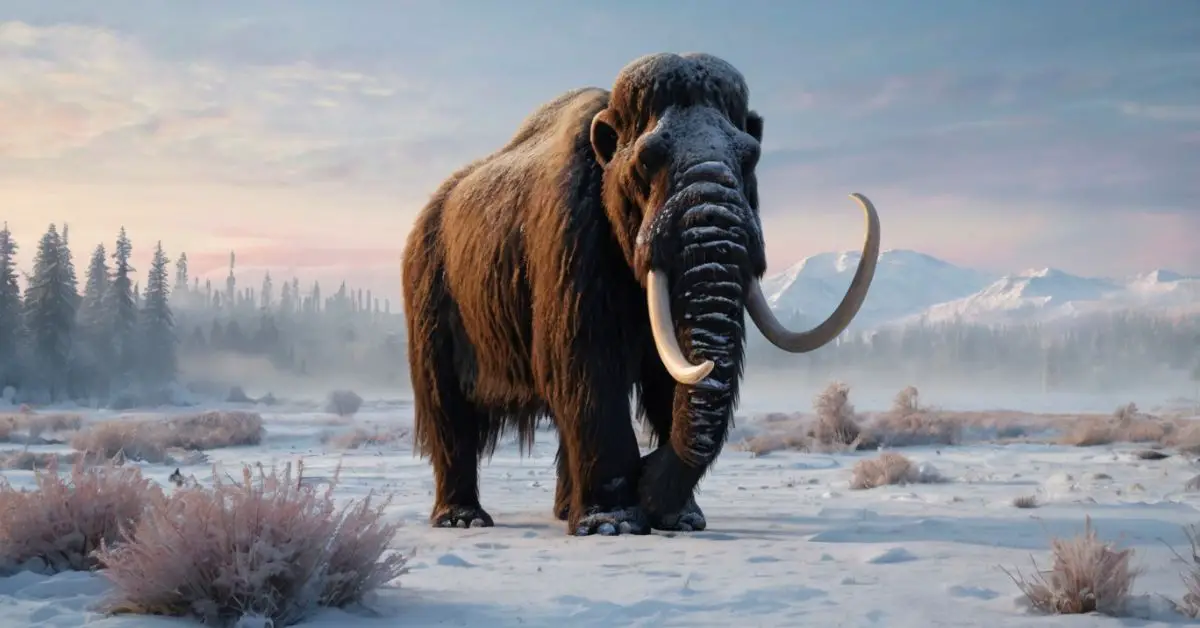By Flashpoint News
April 07, 2025
In what sounds like a page out of science fiction, woolly mammoths — extinct for thousands of years — could be making a comeback by 2028. The driving force behind this ambitious project is Colossal Biosciences, a biotech company that has captivated the world with its bold vision: using advanced genetic engineering to bring back extinct species. But why the mammoth, and how close are we really to seeing them roam the Arctic again?
The Science Behind the Mammoth Revival
The plan is not to clone a mammoth exactly as it once was but to create a hybrid. Scientists are working with the Asian elephant, the mammoth’s closest living relative, and editing its genome to include cold-resistant traits found in preserved mammoth DNA. Using CRISPR-Cas9 technology, researchers can splice these ancient genes into the elephant’s genome, creating a living organism with physical and behavioral traits of the woolly mammoth.
These modified embryos would then be implanted into surrogate elephant mothers — or possibly into artificial wombs, a technology that is also under rapid development. Once born, these creatures would not only look like mammoths but behave like them too, capable of thriving in cold climates.
Why Bring Mammoths Back?
Colossal and its co-founder, geneticist George Church, argue that reviving mammoths isn’t just about scientific curiosity — it’s about environmental restoration. By reintroducing mammoth-like creatures to the Arctic tundra, the project aims to restore degraded ecosystems. Mammoths helped compact snow and knock down trees, which in turn promoted grassland ecosystems and helped maintain permafrost.
As permafrost melts due to climate change, it releases massive amounts of methane and carbon dioxide. Restoring mammoth herds could slow this thawing process, effectively becoming a tool in the fight against global warming.
Ethical and Logistical Challenges
Despite its promise, the project faces numerous ethical and practical hurdles. Critics argue that resources might be better spent conserving existing endangered species. There are also questions about the welfare of the hybrid animals and whether we truly understand the ecological impact of reintroducing a species that’s been gone for over 4,000 years.
Additionally, managing a population of large, cold-adapted animals in a modern context presents challenges in habitat, breeding, and public perception. Will these animals be considered truly wild? Will they require protected zones? And how will native communities respond to their introduction?
The Countdown to 2028
Still, the countdown is on. Colossal has received millions in funding and brought together a team of world-class geneticists, conservationists, and tech entrepreneurs. With their eyes set on 2028, the woolly mammoth may soon transition from prehistoric memory to modern marvel.
And if successful, this could open the door to reviving other extinct species, redefining conservation, and reshaping ecosystems across the globe.
Maybe you also like:
- Scientists Have Cloned Real Dire wolves—And They’re Alive Today
- The Rise of AI Art: How Artists Like Hayao Miyazaki Are Pushing Back
- Viral Boat Confrontation in Florida Sparks Outrage and Investigation
Follow me on X, YouTube,
Pinterest , Facebook
Threads and Instagram
For more updates visit: flashpointnews.com.br


